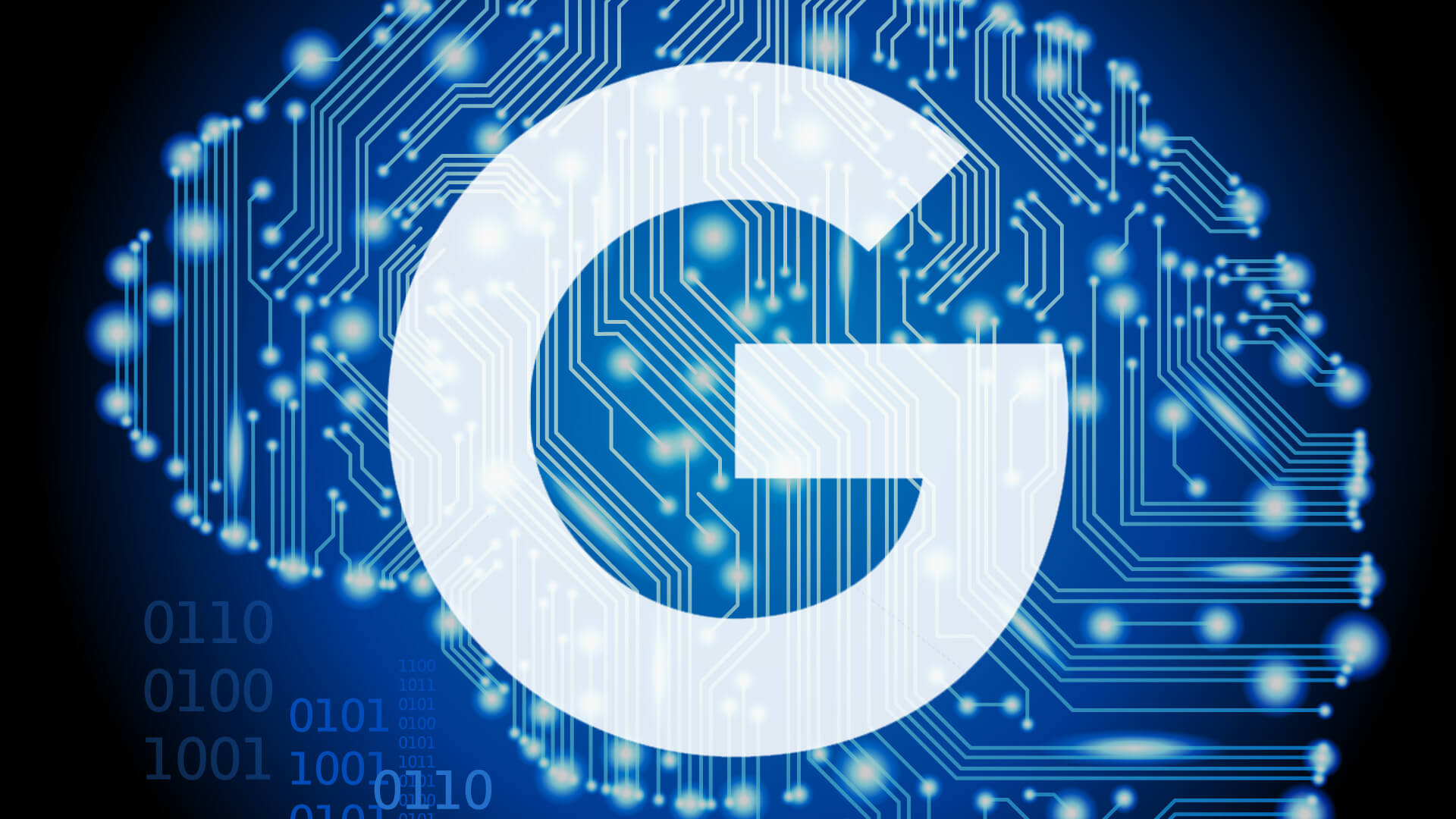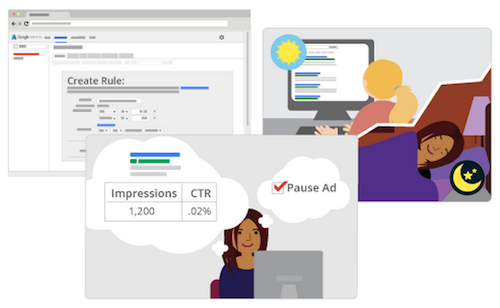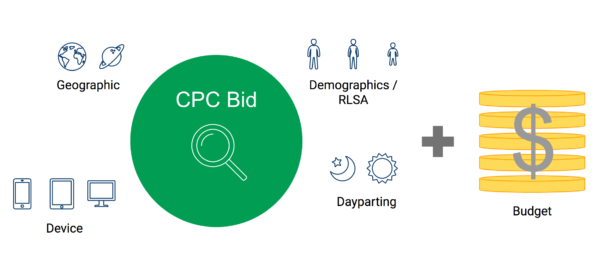How artificial intelligence drives PPC automation
As artificial intelligence starts to play a bigger role in PPC account management, columnist Frederick Valleys believes we must be vigilant about understanding the capabilities of the systems we're relying on.

From the 1970s through today, there have been three waves of technology innovation in the Silicon Valley that have spawned many industries, including ours (online marketing).
First, there were semiconductors, then personal computers, and most recently, the internet. Now we’re on the cusp of the next wave of innovation, driven by advances in artificial intelligence (AI).
Given that our industry exists thanks to these waves of innovation and that automation — a top trend in PPC for 2017 — can be driven by AI, how might things change for us during this next wave? And what risks do we face when we start to use far more automation without knowing the extent of its abilities?
I will explore all of this and propose a way for our industry to add a layer of transparency to automation tools to prevent campaigns from suffering at the hands of bad robots.
A primer on artificial intelligence and its methods
Before explaining how AI pertains to online marketing, it may be helpful to clarify what some of the buzzwords related to AI mean.
Artificial intelligence
AI at its simplest is when a machine can solve a problem that we perceive as something that requires a human and their special “human skills,” or cognition. Because that’s a fairly loose definition, it also means that what we think of as AI has evolved, and we no longer find it all that impressive when a computer wins at chess. Now the bar has been raised to the likes of driving a car that has no steering wheel across town in rush hour traffic. How it achieves this feat doesn’t matter for it to be considered AI.
I gave a demo onstage during my keynote at HeroConf London, where I had a conversation about my AdWords account with Amazon’s Alexa. Having her understand what I was asking was a feat of really advanced AI, but providing the answers to my questions about account performance was done through some simple code that interacted with the API from Optmyzr (my company).
I got some great reviews of that demo, and people said it was amazing to see this type of interaction with a machine, but having built the demo myself, I found it fascinating that people thought the machine might be far more capable than it really was.
Manually programmed AI
If you had enough time, it would be possible to create AI by manually writing a lot of code consisting of if-then statements to teach a computer what to do in every possible situation to solve a problem. In PPC-land, that would be like using a lot of Automated Rules to fully codify how your account manager goes about optimizing an account.
That approach is not very “intelligent” and requires too much work to define all the possible edge cases, so following are some newer and more practical ways of creating AI.
Machine learning
Machine learning is a statistical approach for finding correlations from lots of data to try to predict future events. Rather than explicitly telling the computer what to do in every possible situation, the machine teaches itself what to do based on likely possible outcomes given historical data.
Machine learning has been present in AdWords since at least 2008, and it impacts advertisers hundreds of times a day when the Quality Score mechanism helps to predict which ads are most likely to be clicked on for every single search that happens.
Neural networks
Neural networks are another method for achieving AI by mimicking how we understand the human brain to work. In our brains, information is passed from neuron to neuron until we ultimately come to some interpretation of the signal. Neural networks also pass an input through many layers of processing and assign a confidence score for each level of processing.
Deep learning is when there are many layers of this type of processing happening. The signal may pass through different paths, and the path with the highest confidence in being correct produces the result.
One of the engineers on Google Translate gave me an example of neural networks recently. He explained that for Google to be able to translate text captured through a camera phone in real time, neural networks are used to help with computer vision. A piece of text has some common characteristics which the neural network looks for before translating it (which is done using statistical machine translation).
If you want to see a neural network in action, try Quick, Draw, a fun doodling game built by Google. As the machine gets more data from the user continuing to draw, it’s fun to hear how its guesses evolve until it finally gets the right answer.
Bad artificial intelligence kills campaigns
So at its heart, AI is about a computer handling a task that historically would have been considered something only a human could do well. Handing a task off to a computer is also called automation, and that’s a dream of every PPC marketer.
Now that we understand that there are different methods for achieving AI, all with varying degrees of proficiency, let’s pause for a moment to illustrate a few examples of when the technology behind AI is just not good enough to handle PPC campaigns correctly. These examples are not hypothetical; they are things I’ve seen in real accounts.
When black box bid management sank an e-commerce campaign
An e-commerce company was using a black box bid automation system, similar to Google’s Flexible Bid Strategies, to achieve a better ROAS for their AdWords campaigns. One day they launched a new landing page design which performed much worse than expected. While they quickly noticed the decline in conversion rates, so did the black box bid system. The team restored the old version of the landing page, and conversion rates returned to their usual levels, but for some reason, the overall number of conversions didn’t come back to the same levels as before.
After many weeks of lost sales, they figured out that some of their main keywords had been bid down to page 2. Because they didn’t get enough new data to reverse the decision to lower the bid after the landing page was fixed, it never made its way back onto page one of the results.
When automated keyword mining caused a breach of contract
In another example of automation gone wrong, a company that was automating its search query mining lost comarketing dollars from a manufacturer when the system added queries with great performance as new keywords but failed to realize that these new keywords included trademarks they were contractually forbidden from using under the comarketing contract. If the system managing the automation is too simple and merely evaluates the metrics, it’s prone to make mistakes like this that a human would easily avoid.
Levels of PPC automation
If we’re going to automate part of our jobs, we need to understand the limits of the AI we’re using, because that tells us how closely to supervise the system if we don’t want our campaigns to crash and burn.
There’s an analog in this from the world of self-driving cars, where the industry has come up with standardized levels of autonomy ranging from 0 to 5, helping to set expectations with drivers about how involved they should be.
With a level 1 automation like cruise control, the driver knows they still need to pay attention for stopped vehicles ahead while also handling all the other tasks like steering and braking. Tesla’s autopilot is a level 2 automation, where the car handles all the basics by itself under perfect conditions, but the human driver needs to remain fully attentive at all times for when there is an anomaly.
I propose defining levels of automation so that users of PPC tools (including the ones my company provides) have a better sense of what the limits of the tools are.
Level 0
Everything in the PPC account is done manually, with spreadsheets, and with tools that require all the inputs to be provided by humans.
Level 1
In level 1, automations monitor and alert but take no automated action. A good example is an AdWords Script like Google’s Anomaly Detector, which scans performance of an account hourly and triggers an alert when the metrics deviate more than a set percentage from expectations.

An AdWords Script to alert when something unusual is happening in an account is an example of Level 1 PPC automation. (Image from Google,)
Level 2
Here, individual management tasks are automated, but there is no interconnection between the tasks. A good example of this would be an Automated Rule that runs daily and pauses any keywords that have a Quality Score lower than a set number.

Programming rules for how an account should be managed, using a system like Automated Rules, is an example of Level 2 PPC automation. Image from Google.com
Level 3
This level of automation handles multiple tasks together and understands the interplay of the managed components. An example here would be a system that automates both setting bids and budgets and is smart enough to understand that when bids are raised, this may necessitate adjusting budgets to drive the most traffic to the best-performing campaigns first.

A tool that manages bids, bid adjustments and budgets in unison is an example of a Level 3 PPC automation. Image from Optmyzr presentation.
Level 4
Now we’re getting into full automation, where human oversight is no longer required as long as the ads are kept within some pretty tight bounds. Imagine a vertical-specific platform where you set the goals of the campaign, like a CPA target, and a maximum budget, and because the vertical is so tightly defined, the system knows what it is allowed to do with bids, budgets, ads, keywords, targeting options and so on.
Level 5
I think this is what Eric Schmidt, Google’s CEO when I worked there, would talk about during our weekly TGIF meetings. He envisioned a world where the ad system was so smart that it would know how to grow any business. A company could write a blank check to Google, knowing that they would see profitable growth as a direct result.
Conclusion
As artificial intelligence starts to play a bigger role in PPC account management, I believe we must be vigilant about understanding the capabilities of the systems we’re relying on. There’s so much hype and marketing around AI that we can easily be fooled into trusting that an automation is far more advanced and capable than it really is.
As an industry, we should follow the lead of the auto industry and develop a clear framework for talking about levels of automation. If we fail to be open and transparent and set clear expectations, mistakes will happen that will decrease PPC managers’ trust in technology, and this can cause rates of adoption of amazing advances to decelerate. And as someone who loves technology, I would hate to see that happen.
Contributing authors are invited to create content for Search Engine Land and are chosen for their expertise and contribution to the search community. Our contributors work under the oversight of the editorial staff and contributions are checked for quality and relevance to our readers. The opinions they express are their own.
Related stories
New on Search Engine Land